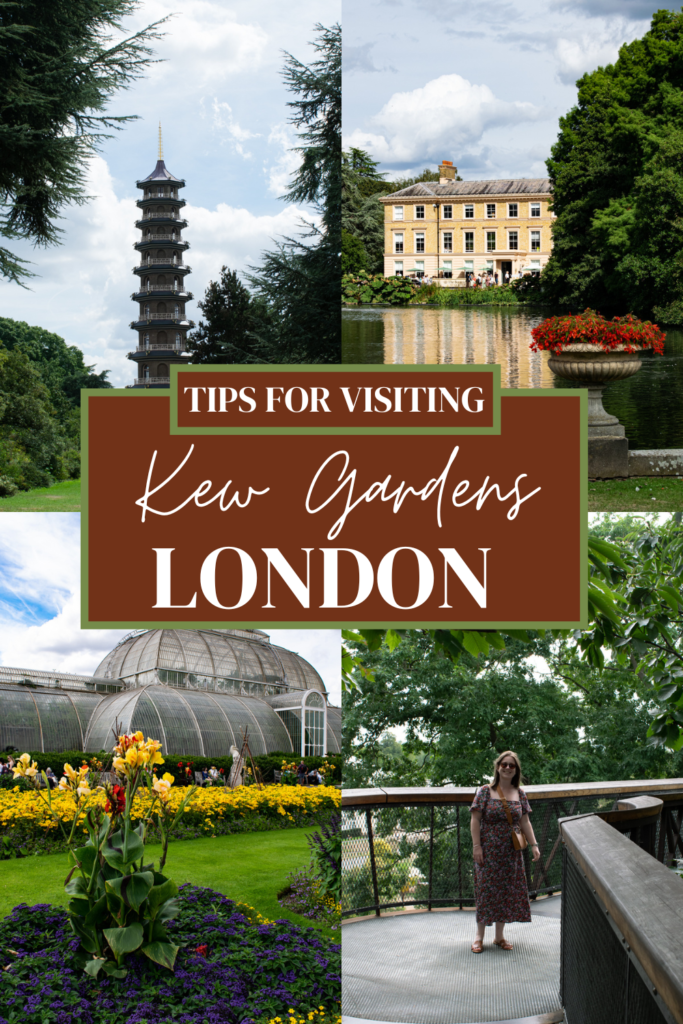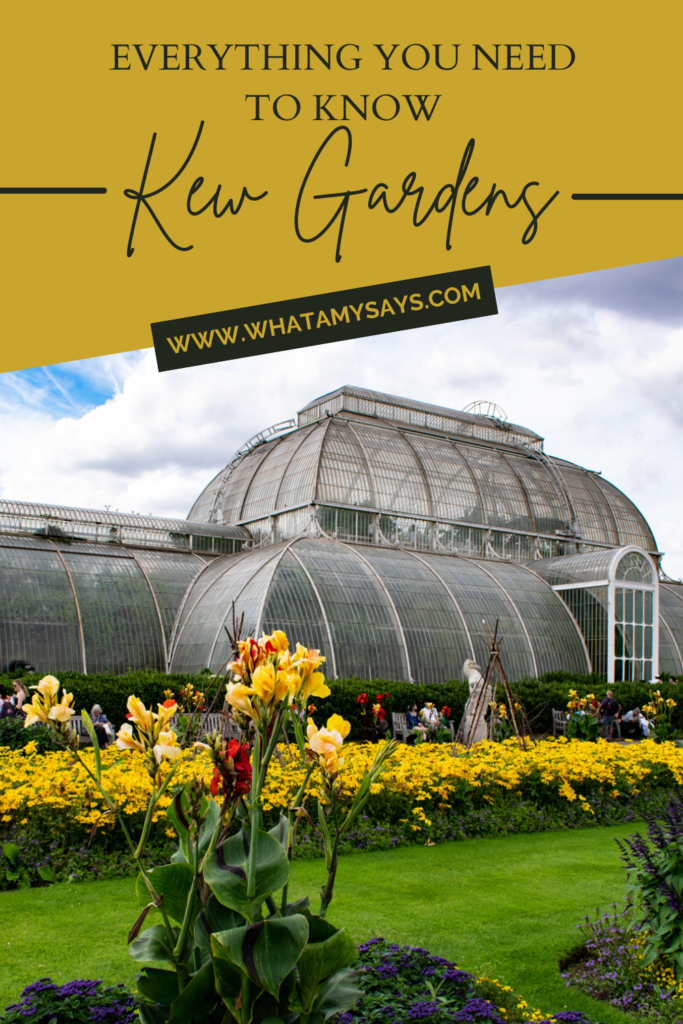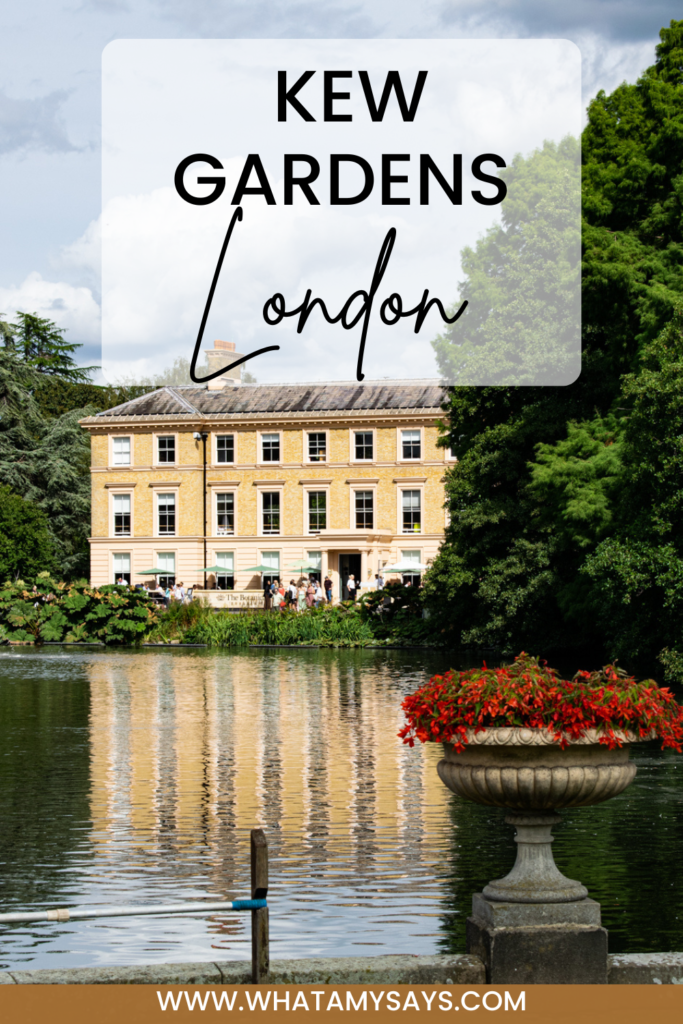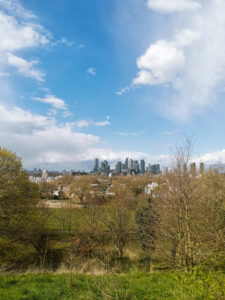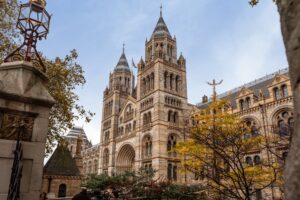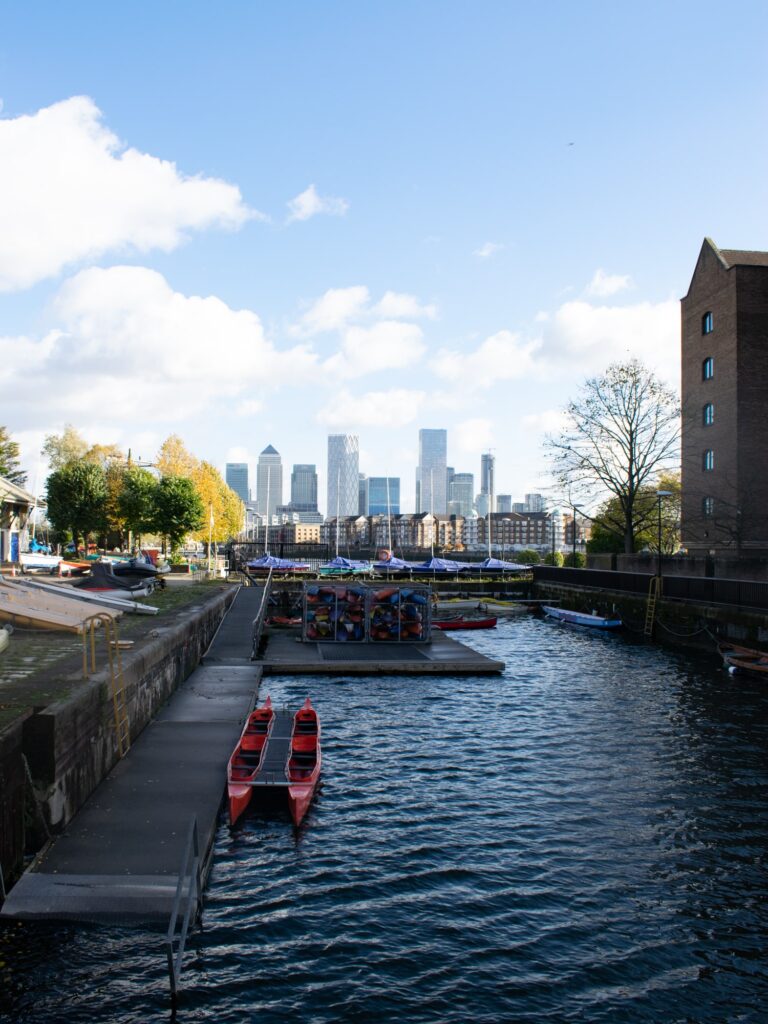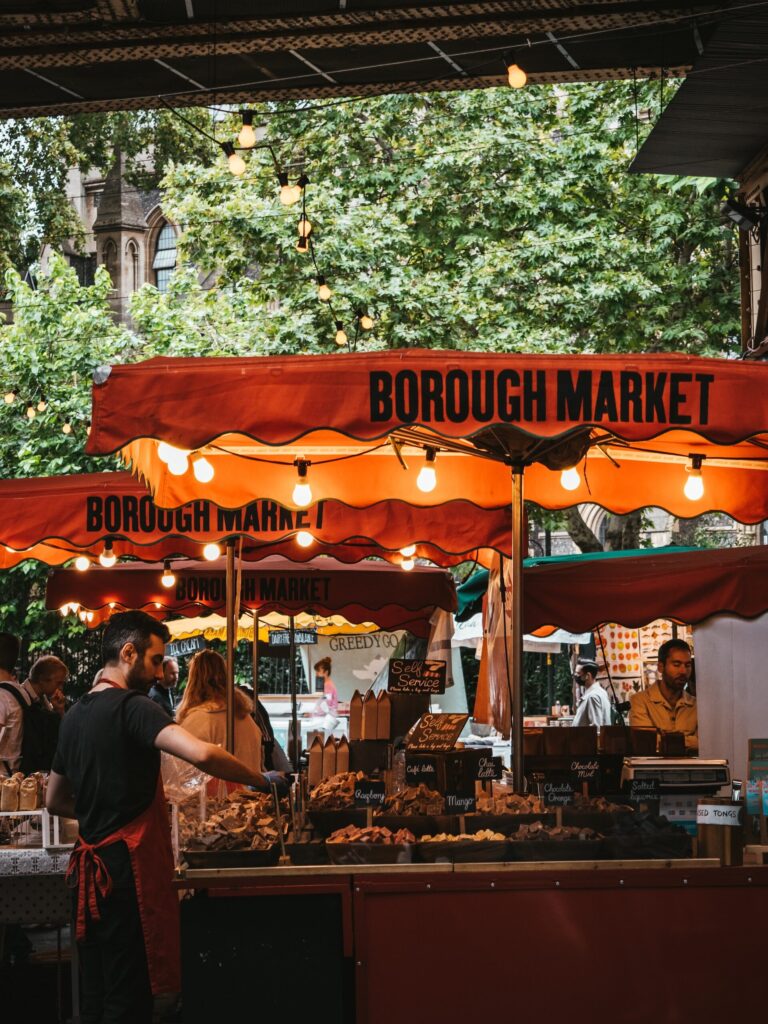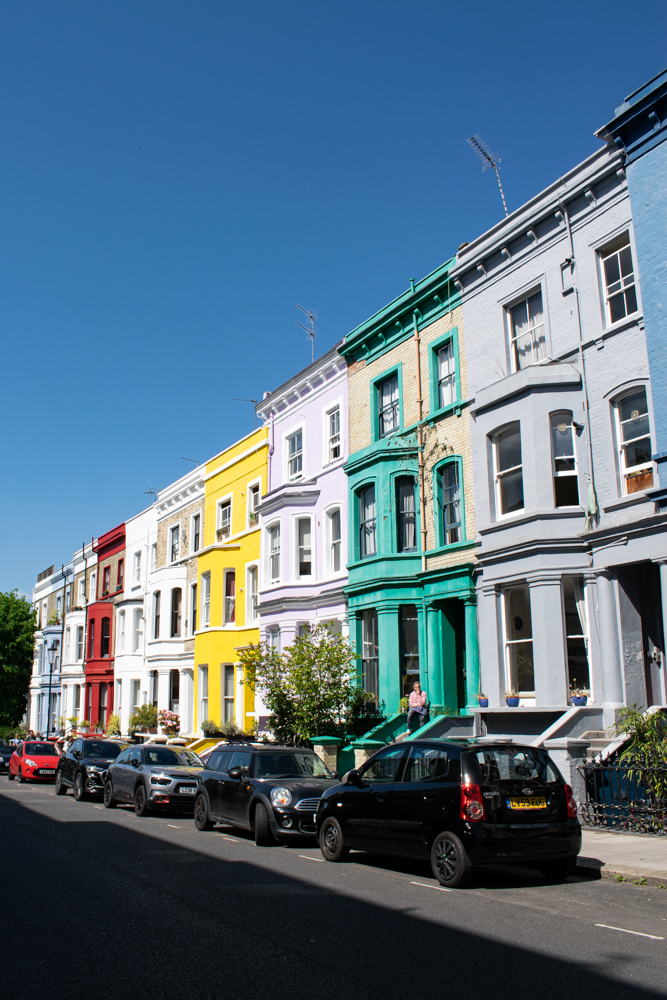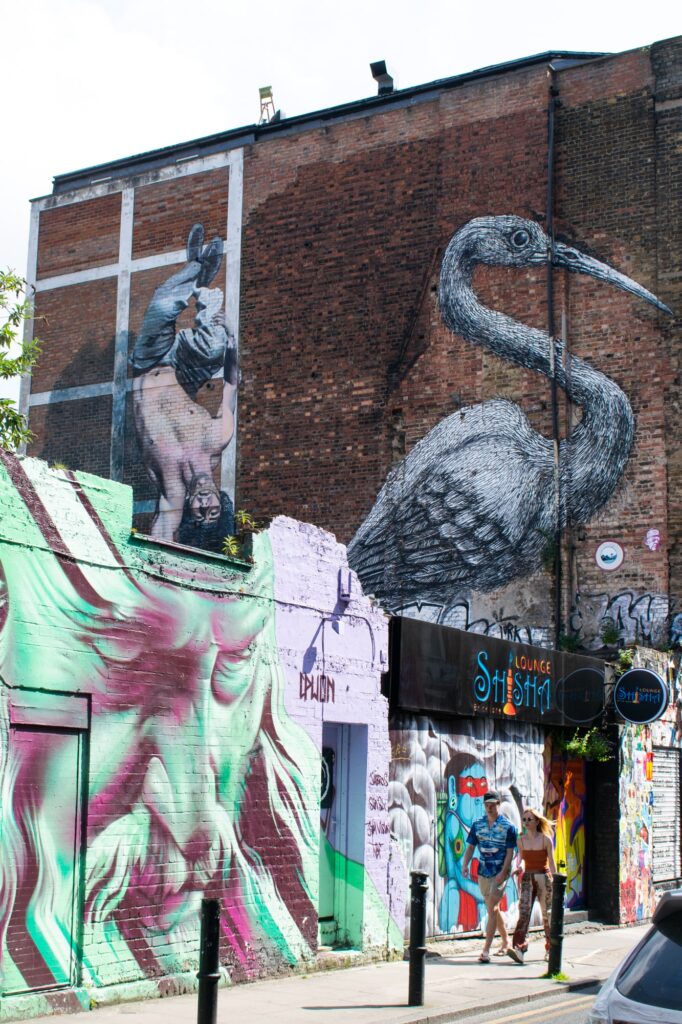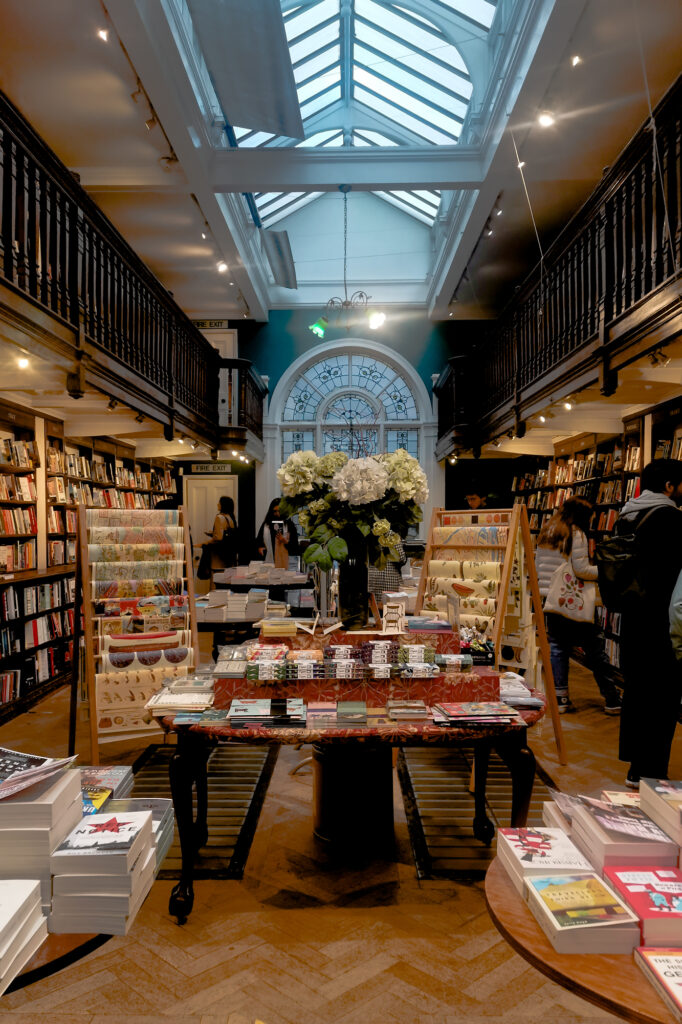Last Updated 11/03/2024 | 11th March, 2024
This post may contain affiliate links to things like tours, hotels, and products that I love. These links help me earn a small commission on all qualifying purchases at no additional charge to you. Thank you!
Nestled on the outskirts of London, Kew Gardens Richmond stands as a botanical wonder, captivating visitors from all corners of the globe. Spanning over 300 acres, this UNESCO World Heritage Site is a haven for nature enthusiasts and horticultural addicts alike.
As you step into this lush oasis, prepare to be immersed in a kaleidoscope of colours, scents, and textures that dance harmoniously with their tranquil surroundings.
Founded in 1840, Kew Gardens boasts an extensive collection of rare and exotic plant species from every continent, showcasing remarkable diversity.
Kew Gardens consistently ranks as one of the best things to do in London, drawing visitors from around the world each year.
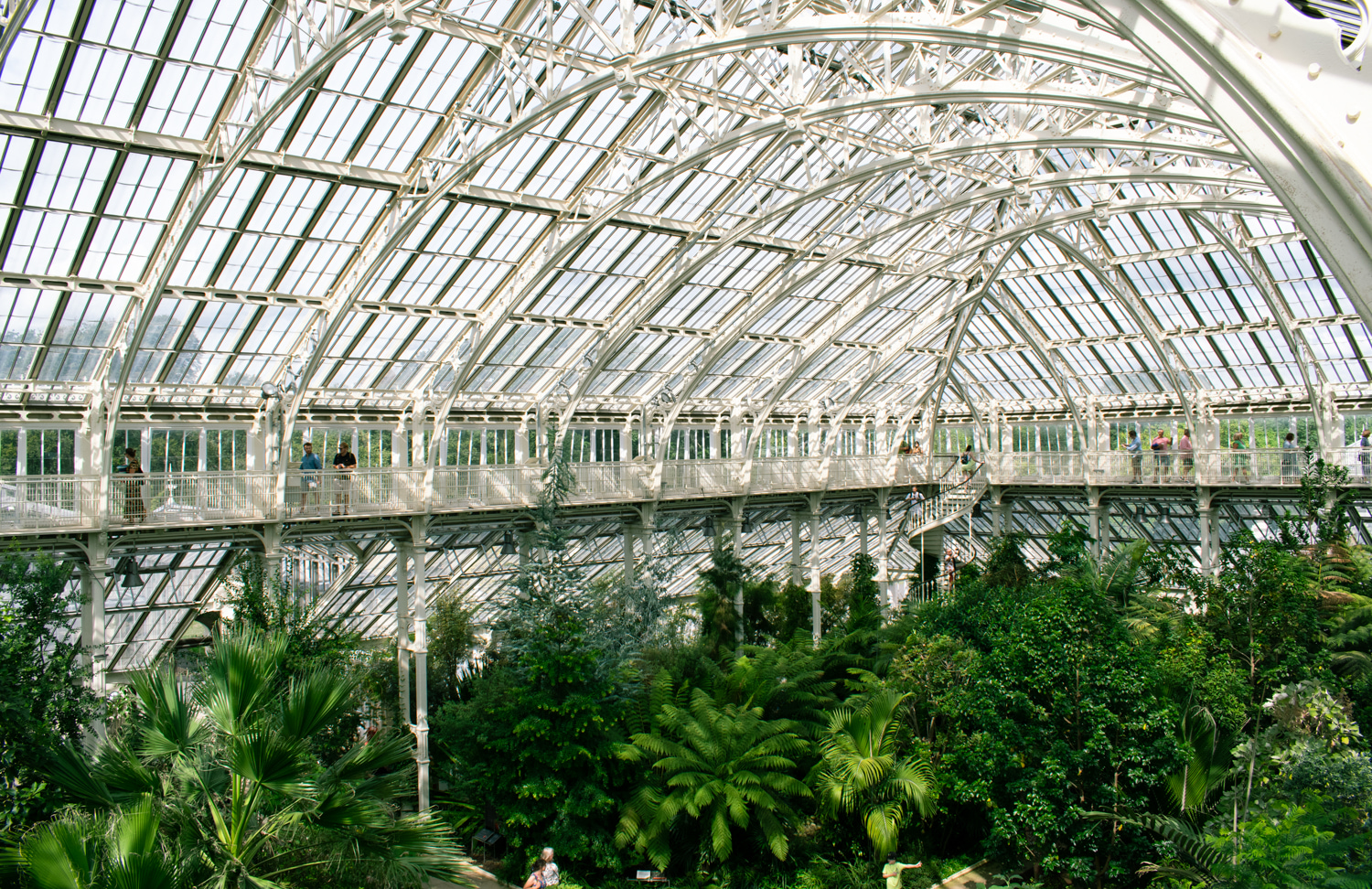
What Is Kew Gardens?
The history and origins of Kew Gardens Richmond can be traced back to the 18th century when Princess Augusta, mother of King George III, established a nine-acre garden as part of Kew Palace.
Over time, this modest garden expanded under the guidance of royal botanists and horticulturists who collected exotic plants from around the world. In 1840, Kew Gardens officially became a public institution, opening its gates to visitors.
The gardens gained international recognition for their scientific research and conservation efforts, with notable contributions in plant classification and the study of tropical plants.
Today, Kew Gardens encompasses 326 acres and is home to over 50,000 plant species, making it a world-renowned botanical institution.
Kew Gardens is located in a beautiful West London area, so I recommend making it a full day out. Explore the beautiful area of Richmond and its wonderful Richmond Park (one of the best Parks in London).
Kew Garden Tickets
The opening times at Richmond’s Kew Gardens vary depending on the time of year you visit. The gardens are open from 10 am – 7 pm during summer. However, between November and March, the gardens close significantly earlier.
The 24th and 25th of December are the only days the gardens are closed.
Admission tickets can be purchased online or at the entrance gate. However, tickets are significantly cheaper when booked online than in-person (£17 v £21.50 during peak times). Therefore, I would recommend buying your tickets online beforehand.
Wear comfortable shoes to make the most of your visit, as the gardens cover over 300 acres, so you will be sure to rack up the steps!
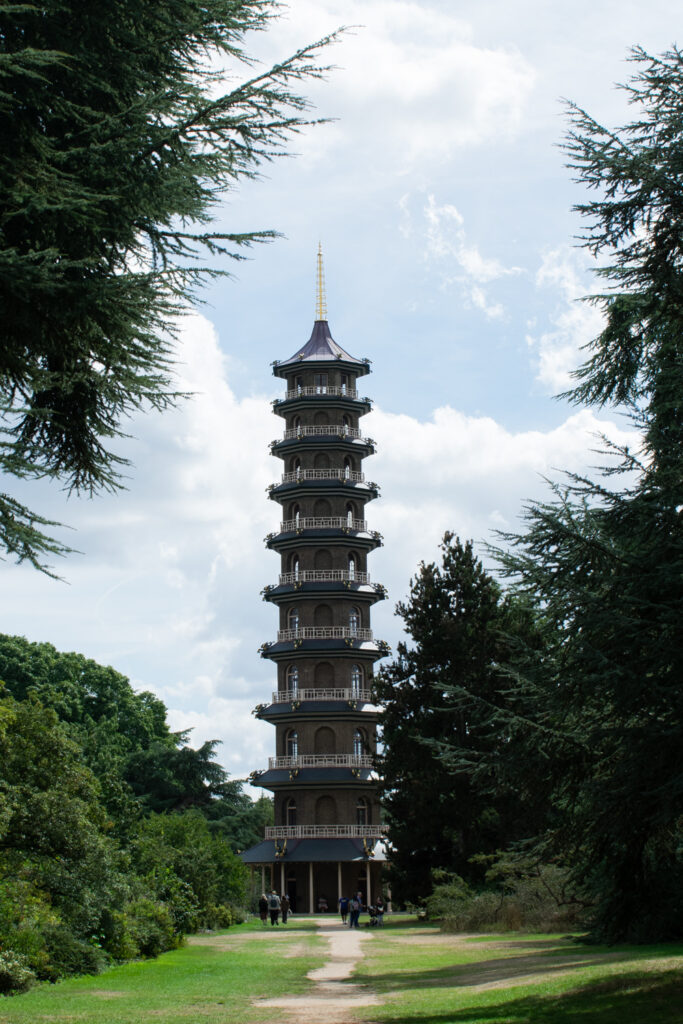
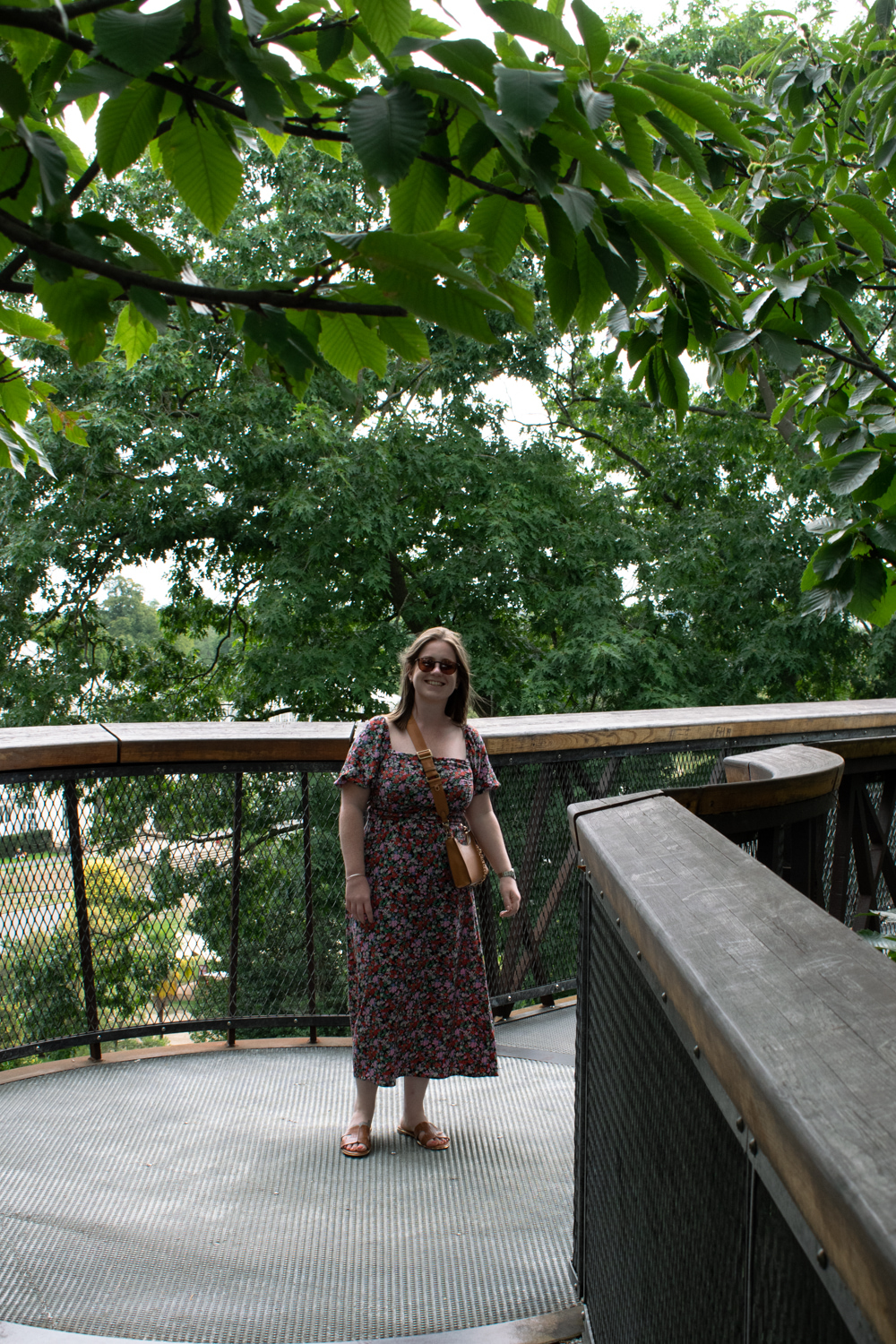
How to Get To Kew Gardens
Kew Gardens is very easily accessible from anywhere in London. The Overground and District Line pass through Kew station, which is just a ten-minute walk from the gardens. There are also ample bus connections to this area of the city.
If you’re travelling to London, it will take around 1 hour from Kings Cross station to reach Kew Gardens.
The Best Things to See at Kew Gardens
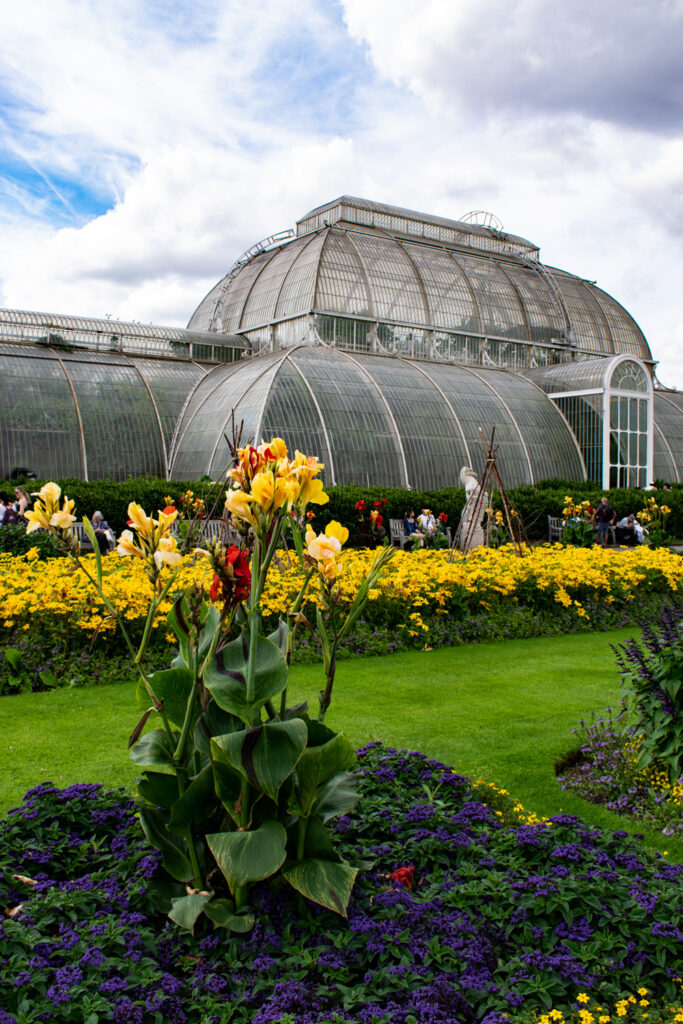
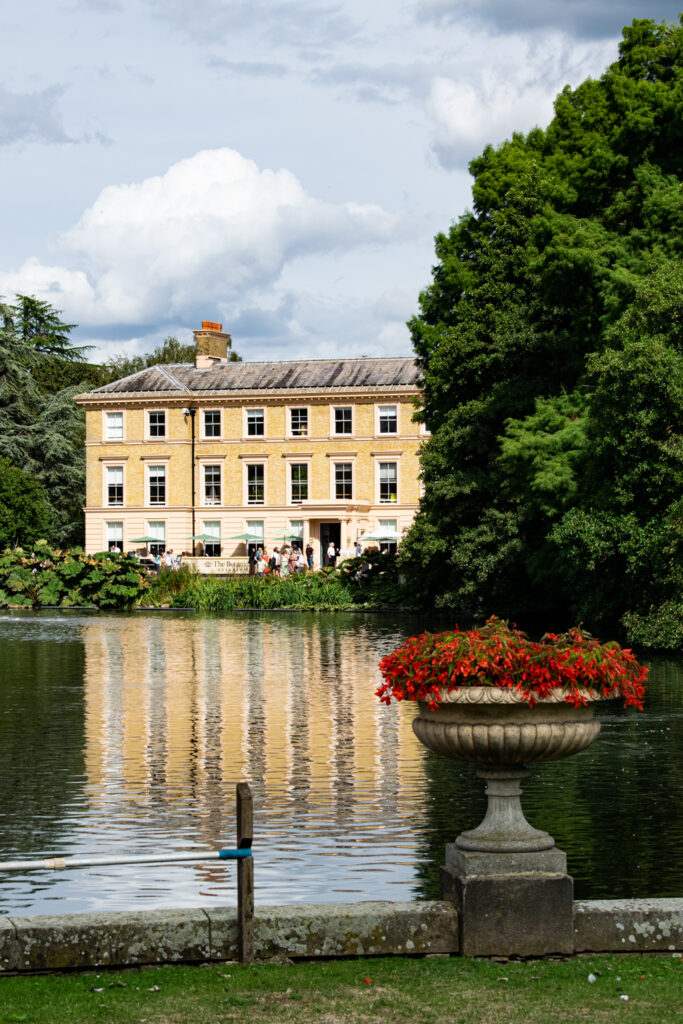
Kew Gardens Treetop Walkway
Note: This was my favourite attraction at Kew Gardens!
For a truly unique experience within Kew Gardens Richmond, head towards the Treetop Walkway.
This elevated pathway allows visitors to stroll among the tree canopy for breathtaking views over the gardens. As you ascend into nature’s embrace, keep an eye out for birds and squirrels darting through branches while enjoying uninterrupted vistas across this green oasis.
Kew Gardens Pagoda
The Grand Pagoda is perhaps the most striking attraction at Kew Gardens. It was completed in 1762 as a gift for Princess Augusta, who, as mentioned earlier, was the founder of the Gardens.
It’s crazy to think now, but this 50m structure once allowed views over the incredible London skyline.
Unfortunately, the original 80 gold-gilded dragons that once adorned the ten levels were removed in 1784. Rumour has it that they were sold to pay off George IV’s gambling debts, but the more realistic (or so they want us to believe) story is that these wooden features simply rotted.
As part of a major conservation project, the Grand Pagoda has now been restored to its former glory.
The circular staircase inside the pagoda now allows visitors to climb to the top. For a small extra fee (£4.50), you can climb the 253 steps and enjoy fantastic views over the whole gardens.
The Temperate House
Another must-see attraction is the Temperate House, which happens to be the largest surviving Victorian greenhouse globally.
Recently restored to its former glory, this architectural masterpiece showcases an impressive collection of rare plants from temperate regions across six continents. Marvel at towering tree ferns, delicate orchids, and vibrant flowering shrubs as you wander through this botanical wonderland.
The Palm House
One of the most iconic landmarks in Kew Gardens is the Palm House. This magnificent Victorian glasshouse is a feat of engineering and horticulture.
Step inside to experience the lush tropical climate that nurtures an array of exotic plants from around the world. The soaring palm trees and vibrant blooms create a captivating atmosphere that transports you to distant lands.
The Japanese Landscape
Professor Masao Fukuhara of Osaka University opened in the amazing gardens in 1996.
As you will expect from the name, the magnificent Japanese Landscape was designed to bring a touch of Japan to Kew Gardens. Japan’s famous mountain regions are represented by rock formations, interspersed with bright plants that create a rainbow of colour.
The Chokushi-Mon is one the most magnificent elements of Kew Garden’s Japanese Landscape. With its traditional copper roof and incredibly intricate wooden carvings, this structure is the perfect place to relax. Her Imperial Highness Princess Sayako reopened the gateway following its restoration in 1994.
The Princess of Wales Conservatory
Designed by Gordon Wilson, the Princess of Wales Conservatory replaced 26 smaller buildings, creating one of the most loved attractions at Kew Gardens Richmond. It was opened by the beloved Princess Diana in 1987, but the building is actually named after Princess Augusta.
Incredibly, these gardens span a whopping 4,500 sq meters and are home to 10 different climate zones. This is the most complex glasshouse in the gardens, with a team dedicated to perfecting the various environments.
As well as being home to a spectacular range of plants, there is an abundance of fish and even five Chinese water dragons that call this place home.
My favourite fact about the Princess of Wales Conservatory is that Sir David Attenborough buried a time capsule in the foundations to be opened in 2085. This contains vital seeds and crops which are predicated to be extinct by the time the capsule is opened.
Kew Rose Gardens
The official Kew Gardens website describes the Rose Gardens as a ‘floral feast for the eyes’, which I think is a wonderful description.
The area wasn’t actually planted with roses until the 1920’s but since then, it has burst into life, cultivating over 170 different species of rose. I would recommend visiting first thing in the morning when the light hits the area beautifully. You would be sure to grab some great photos!
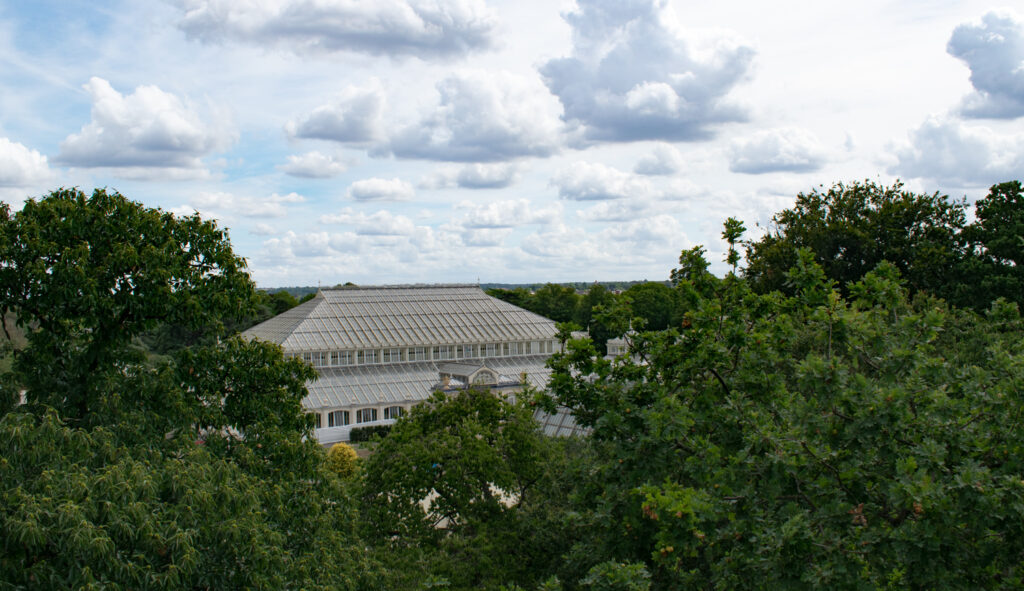
Eating at Kew Gardens
I have to be honest: I did not rate the food (or coffee) inside Kew Gardens orangery.
However, the options at Kew are plentiful, with more formal eateries such as The Botanical Brasserie and the Pavilion Bar and Grill, which both have excellent reviews. The Botancail Brasserie also offers a highly regarded Kew Gardens afternoon tea for those looking for a quintessentially British day out.
Events at Kew Gardens
Kew Gardens offers a range of captivating educational programs and events that provide visitors with enriching experiences. Their educational initiatives cater to various age groups, fostering a deeper understanding and appreciation for the natural world.
Through interactive workshops, guided tours, and hands-on activities, participants are encouraged to explore the diverse plant species and ecosystems found within Kew Gardens. From discovering the fascinating world of pollinators to learning about sustainable gardening practices, these programs aim to inspire environmental stewardship among visitors.
Additionally, Kew Gardens hosts special events such as botanical art exhibitions and science festivals that offer unique opportunities for learning and engagement. These initiatives ensure that every visit to Kew Gardens becomes an immersive educational adventure.
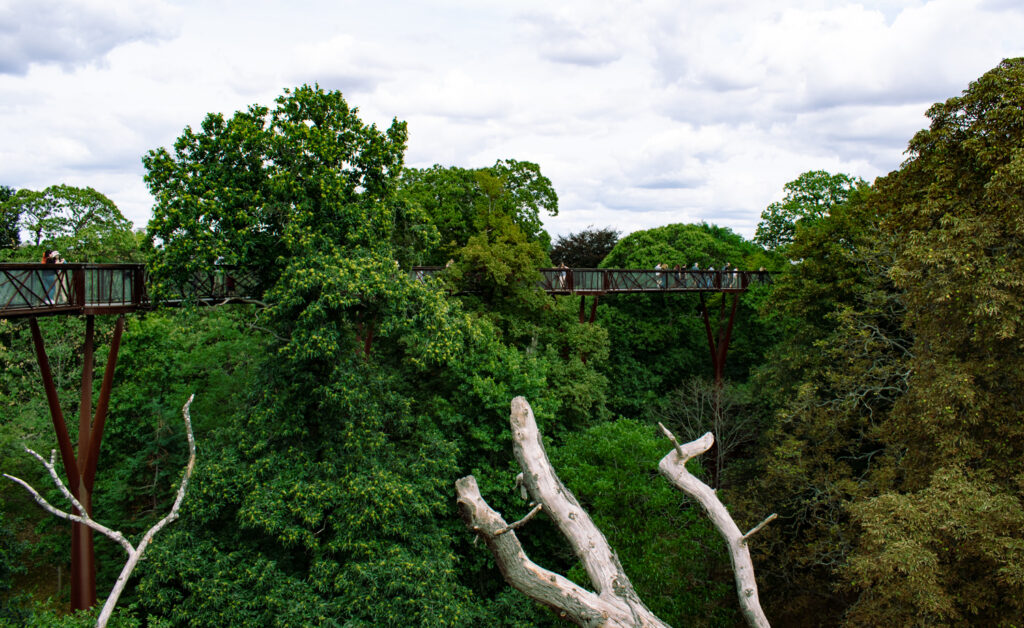
Kew Gardens Richmond – Frequently Asked Questions
What Is the Kew Gardens Postcode?
The main entrance at Kew Gardens is the Victoria Gate, and the postcode is TW9 3JR.
When Is the Best Time to Visit Kew Gardens?
The beauty of Kew Gardens is that it is an excellent place to visit all year round, offering something new with every season. Spring is a beautiful time to visit, watching the individual gardens burst to life. Conversely, Kew Gardens at Christmas is also beautiful, with some of London’s most spectacular festive lights.
How Is Kew Gardens’ Parking?
There is a pay and display car park on Ferry Lane (TW9 3AG), which costs £7 per day. However, as with much of London, the spaces are extremely limited, and it is often full during peak periods. Therefore, where possible, it is recommended that you travel by public transport.
How Much Does Kew Gardens Cost?
Standard tickets are £17 per adult and £5 per child. Tickets during the off-peak season (1 November to 31 January) are slightly cheaper: £12 per adult and £4 per child. Please be aware that these prices are based on those bought in advance. Tickets are slightly more expensive when purchased on the day.
Is Kew Gardens Worth Visiting?
In short… yes! Kew Gardens provides an excellent dose of the outdoors in a sometimes overwhelmingly busy city. There is also so much to learn at Kew Gardens, exploring plants that you will struggle to find anywhere else in the country.
Is Kew Gardens Good for Kids?
Kew Gardens is a great place to visit with children. Kids of all ages will enjoy exploring Kew Gardens’ various attractions. There is also a dedicated Children’s Garden packed with interactive activities.
MORE LONDON INSPIRATION:
The Best Cheap (And Free) Things to Do in London
14 of the Best Museums in London
The Ultimate Shoreditch Street Art Guide
8 of the Best Day Trips From London
Complete Guide to Kew Gardens, Richmond
The Best Things to do in Greenwich
PIN IT FOR LATER:
